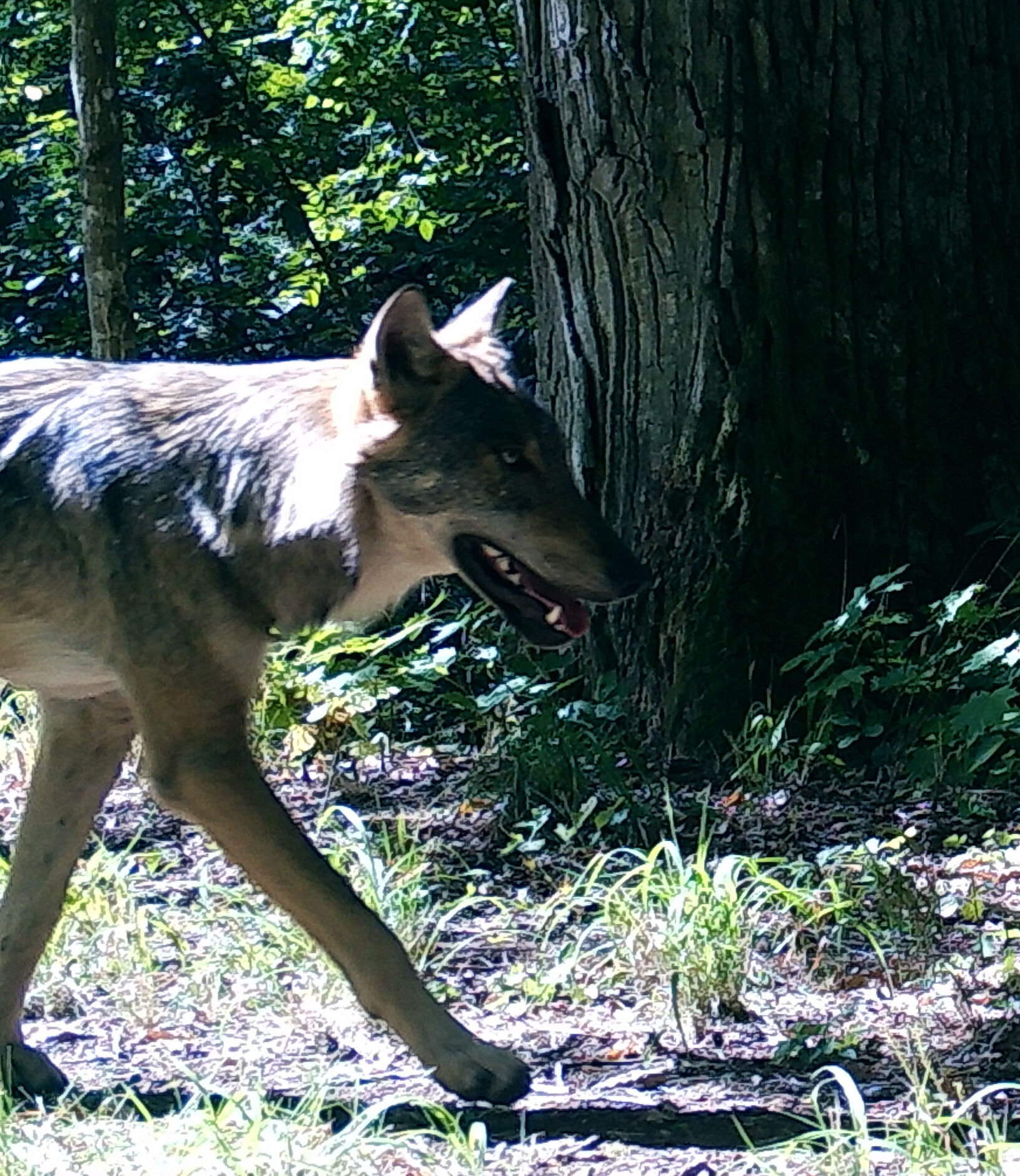For centuries, wolves have haunted human imagination. Folklore painted them as shadowy villains, lurking at the edges of villages, waiting to devour livestock—or children. From the chilling tales of the “big bad wolf” in European fairy tales to the whispered fears of frontier settlers, the wolf became a symbol of menace. This myth, rooted in fear, still lingers in modern debates about wolves and their place in human-dominated landscapes.
But science often reveals truths that contradict myth. Far from being fearless predators waiting to challenge human dominance, wolves carry within them a deep, ingrained fear of us. And according to groundbreaking new research, that fear persists even in regions where wolves are legally protected from extermination.
Wolves in the Shadow of Humans
A recent study led by Western University biology professor Liana Zanette, in collaboration with wolf expert Dries Kuijper from the Polish Academy of Sciences, provides compelling experimental evidence that wolves remain acutely afraid of humans. Published in Current Biology, the study unveils how wolves perceive us—not as just another predator, but as something far more terrifying: a “super predator.”
The research team conducted an ambitious experiment across a vast 1,100-square-kilometer area of Poland’s Tuchola Forest. At intersections of trails, they installed hidden camera-speaker systems designed to capture animal behavior. When an animal walked by, the speakers played different sounds: calm human voices speaking Polish, dogs barking, or harmless control sounds such as birdsong.
The wolves’ reactions were striking. On hearing human voices, wolves were more than twice as likely to flee compared to when they heard birds. They abandoned the site twice as quickly as well. Interestingly, their prey—deer and wild boar—responded with the same heightened fear, bolting at the sound of human presence.
This experiment confirmed what ecologists have long suspected but had never demonstrated so directly: wolves retain a powerful fear of humans, even in areas where hunting them is restricted or banned.
Living by the Night
Fear does not just shape the momentary flight of wolves—it dictates their entire way of life. Zanette and her colleagues discovered that wolves are 4.9 times more active at night than humans. Essentially, they have been forced into nocturnality, not because of natural preference, but because human activity dominates the daylight hours.
This pattern holds true not just in Poland but across the continents where wolves live alongside people. Wherever humans go, wolves adapt by vanishing into the shadows of night. They avoid us, not out of courtesy, but out of necessity for survival.
The lesson is clear: wolves are not growing fearless under legal protection; rather, their fear of humans is so profound that it reshapes their daily rhythms.
The Human “Super Predator”
Why do wolves, powerful carnivores in their own right, cower at the sound of human voices? The answer lies in what researchers describe as humanity’s role as a “super predator.”
Globally, humans kill prey at far higher rates than any other carnivore. We also kill large predators like wolves at nearly nine times the rate they would die from natural causes. Wolves know this reality, encoded through generations of relentless persecution. Even in places where wolves are legally protected, such as the European Union or North America, humans still kill wolves—legally, through population control, or illegally through poaching—at rates high enough to make any fearless wolf short-lived.
In France, for instance, up to 20 percent of the wolf population may be killed each year, despite strict protections. North America sees similar patterns. These numbers reinforce the evolutionary logic: a wolf that does not fear humans will not survive long enough to pass on its genes.
This is why wolves everywhere instinctively avoid humans. Their fear is not misplaced paranoia—it is an ancient survival strategy.
Legal Protection Does Not Erase Fear
The return of wolves to landscapes where they were once exterminated has reignited human anxiety. As wolves reclaim territory in Europe and North America, people encounter them more often, leading to fears of emboldened, fearless wolves. Some argue that legal protection encourages wolves to lose their fear of people.
But the new research demonstrates that this idea is unfounded. Protection from extermination does not equal safety for wolves, nor does it erase centuries of human-driven threat. Legal frameworks may prevent their annihilation, but wolves still face significant mortality from human activity. Their fear remains intact because the danger remains real.
As Zanette explains, “Legal protection does not mean not killing wolves, it means not exterminating them.” Fear continues to be a central part of the wolf’s survival calculus.
The Illusion of Fearless Wolves
If wolves are so afraid of us, why do stories persist of “fearless” wolves approaching human settlements? The answer lies not in boldness but in desperation. Wolves, like all animals, must constantly balance the risks of survival against the rewards of food.
Humans are unique among predators: not only do we kill at extreme rates, but we also live surrounded by an abundance of food—livestock, garbage, crops, and waste. For wolves, this is an irresistible temptation. What looks like fearlessness is, in fact, a wolf willing to risk proximity to its greatest enemy in exchange for calories it cannot easily find elsewhere.
These apparent exceptions are not wolves casting aside fear but wolves whose hunger temporarily outweighs their caution. As Zanette emphasizes, fear remains. The real issue is access to food.
Shifting the Human-Wolf Conversation
The implications of this research are profound. It reframes the human-wolf conflict not as a battle against bold, fearless predators, but as a problem of food security and management. Wolves do not seek humans—they seek our resources.
Thus, the solution lies not in demonizing wolves but in reducing their opportunities to scavenge from us. Proper food storage, secure garbage disposal, and protective measures for livestock are key. By managing our food systems responsibly, we can minimize conflict and allow wolves to live as they prefer—at a safe distance, under cover of night.
This reframing also challenges the centuries-old cultural narrative of the wolf as a looming threat. Wolves are not waiting at the edge of villages to snatch children. They are, in fact, waiting for nightfall, slipping through forests in search of prey, always wary of encountering the true super predator: us.
Wolves as Symbols of Survival
Wolves have survived centuries of persecution, myth, and misunderstanding. Their continued existence in landscapes dominated by humans is a testament to their resilience. But their survival is also a reminder of our responsibility. As the super predator, humans hold immense power over the fate of wolves and countless other species.
Understanding wolves’ fear of humans gives us a chance to replace fear with coexistence. It reminds us that wolves are not monsters but cautious survivors, adapting their lives around the risks we impose on them.
The study from Zanette and her colleagues makes one truth clear: there is no “big bad wolf” unafraid of humans. What there is, instead, is a fearful wolf forced into compromises to survive in a world shaped by human dominance.
Conclusion: Redefining the Wolf
For millennia, human culture has cast wolves as creatures of fear. Yet the science tells another story: wolves fear us, profoundly and universally. They fear us because they must. We are the most lethal predator they have ever known.
But fear alone cannot define our relationship. By recognizing the real issue—wolves’ access to human food—we can shift the conversation from conflict to coexistence. The wolf, far from being a fearless villain, is a mirror reflecting our own choices.
If we secure our food, manage our waste, and protect livestock, wolves will do what they have always done: avoid us, survive in the shadows, and continue to remind us of the wildness that still lingers beyond the edges of our towns and cities.
The big bad wolf, it turns out, was never bad—it was only afraid.
More information: Wolves and their prey all fear the human “super predator”, Current Biology (2025). DOI: 10.1016/j.cub.2025.09.018






